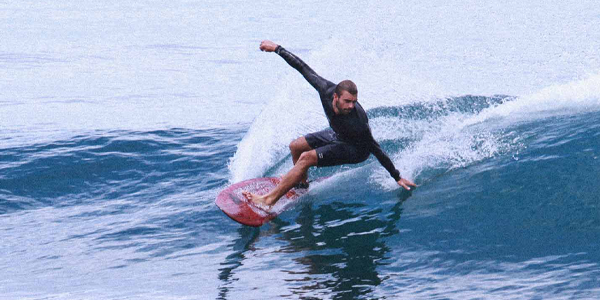
Strategic Surfboard Fin Position and Back Foot Placement
Surfboard fins play a crucial role in determining a surfboard's performance. The positioning of fins affects how the board tracks, turns, and pivots. The back foot's position on the board is also essential in determining how a surfer can take advantage of a surfboard's drive and turning abilities. In this article, we will explore the relationship between surfboard fin position and back foot placement and how surfers can optimize their performance.
The placement of surfboard fins directly affects the board's tracking ability. Fins that are placed closer together provide greater tracking stability and control, while fins placed further apart provide more maneuverability and looseness. Additionally, the positioning of the fins affects how the board turns. Fin clusters placed more towards the tail of the board provide greater pivot and turning ability, while fins placed more forward provide greater drive and speed.
Back foot placement also plays a critical role in surfboard performance. The back foot controls the board's weight distribution, which affects how the board turns and how much drive it produces. In general, placing the back foot further back on the board, over the fins, increases the board's maneuverability and turning ability, while placing it further forward, in front of the fins, increases drive and speed.
When taking off on a wave, the back foot should land somewhere in the middle of the fin cluster to provide maximum stability and control. Once the surfer is on the wave, the back foot can be moved forward or backward to optimize performance based on the wave's conditions and the surfer's intended maneuvers.
To take advantage of a surfboard's drive, the back foot should be placed further forward on the board, allowing for greater weight distribution towards the front of the board. This will increase the board's speed and allow the surfer to generate more power and momentum through turns. Conversely, to take advantage of a surfboard's turning ability, the back foot should be placed further back on the board, allowing for greater weight distribution towards the tail. This will increase the board's pivot and turning ability, allowing the surfer to carve and maneuver more easily. A tail pad with a raised hard stop provides a good reference for where the back foot is positioned at any time on a wave.
It's essential to note that finding the ideal back foot position requires some experimentation and adjustment. Surfers should take into account the board's shape, fin placement, wave conditions, and their own surfing style when determining the optimal back foot position.
Experimenting with back foot placement and fin positioning can help surfers optimize their performance and make the most of their time in the water.
